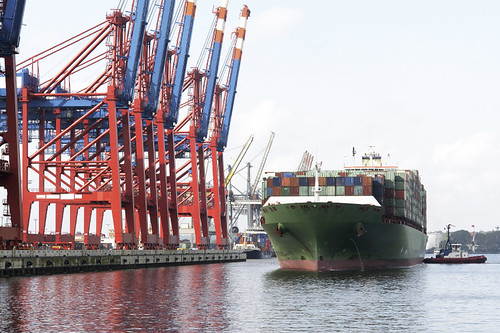
Outside of farm country, many people don’t realize the importance of American agriculture to our overall economy. One in 12 American jobs is connected to agriculture, in all sorts of industries from picking and processing, to packing and shipping, to shelving at your local market. And despite hardships and setbacks this year due to extreme weather, America’s farm economy remains one of the brightest spots in our nation’s economy.
This year and next, U.S. agricultural exports are on track to reach a new high of $137 billion, with a record trade surplus. Farm income is up while farm debt is falling, indicating that American agriculture is on sound footing. And farm exports support more than 1 million jobs here at home.
With the President’s signature on the ratified South Korea, Colombia and Panama trade agreements, American agriculture will see an additional $2.3 billion in trade activity, supporting nearly 20,000 American jobs. In fact, economic output is estimated to grow more under the Korea agreement than from our country’s last nine trade agreements combined.
Tens-of-thousands of American jobs will be created now that Congress has ratified the trade agreements, along with a package of job assistance for workers impacted by trade. Immediately upon implementation of these agreements, the majority of American products exported to Korea, Colombia and Panama will become duty-free. Swift action by Congress also helped us to maintain an advantage on competitors striking their own trade deals with these nations.
I’ve crisscrossed the United States in 2011 hearing about the benefits these agreements would deliver for America’s farmers and ranchers. Here are just a few examples:
- Sixty percent of the items that we currently trade to Korea will be duty free immediately, including corn and soybeans for crush. Other commodities – such as meat, poultry and dairy – will see tariffs and duties reduced over a period of time, creating tremendous opportunity for us to grow our export opportunities.
- On day one of implementation of the Colombia agreement, U.S. exporters will receive duty-free treatment on products accounting for almost 70 percent of current trade. When implementation is complete, we expect it to increase our agricultural exports by 44 percent – an additional $370 million per year. The Colombia agreement is comprehensive, covering all agricultural products.
- In Panama, U.S. agricultural exports have been on the rise, growing to over $450 million in 2010. Our agreement with Panama will continue this progress – with an additional $46 million in annual sales upon full implementation. The Panama agreement is also comprehensive.
At their heart, the trade agreements with Korea, Colombia and Panama represent an important step forward in realizing President Obama’s jobs agenda, and his goals of doubling American exports and keeping our nation competitive in the 21st century. In each of the three agreements, the President fought for a better deal for American workers, and got one, underscoring a balanced trade agenda that opens new markets for our exporters and new opportunities for America’s working families.
For America’s farmers and ranchers, the trade agreements help to build upon what has already been a great year.
Fact sheets on how all three trade agreements will benefit U.S. agriculture are available here: Korea, Colombia and Panama.



